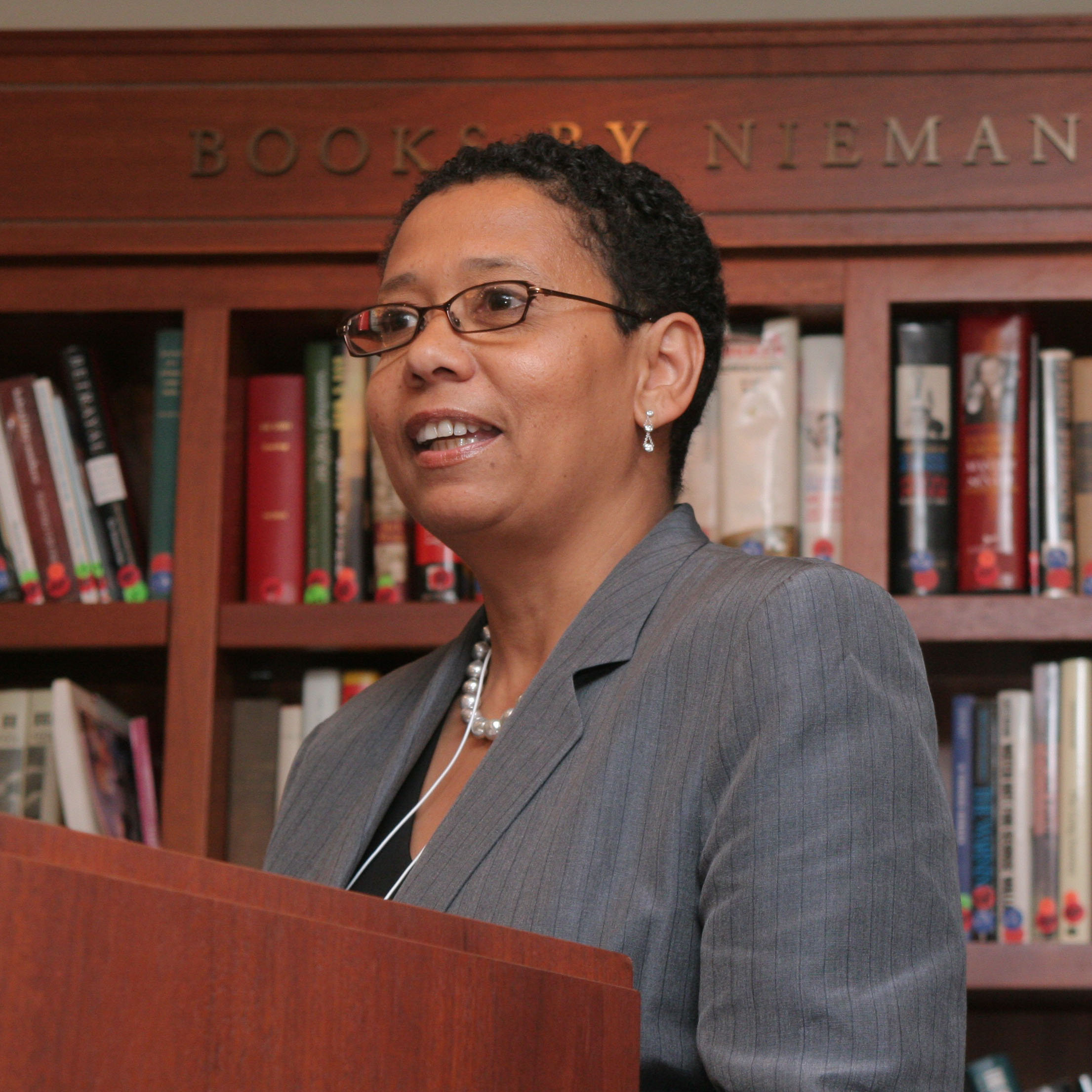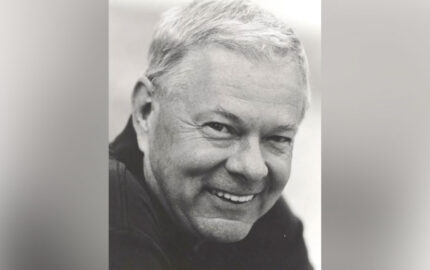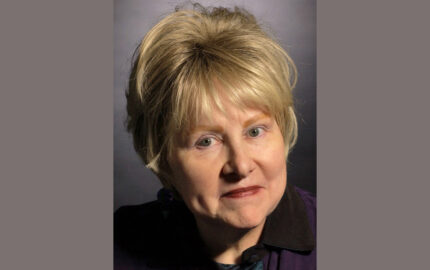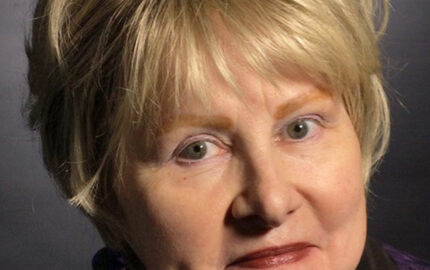Dori J. Maynard, a 1993 Nieman Fellow and president of the Robert C. Maynard Institute for Journalism Education who was a longtime advocate for improving newsroom diversity, died February 24th at her home in West Oakland, California, from complications of lung cancer. She was 56.
Bob Giles, former curator of the Nieman Foundation and a 1966 Nieman Fellow, said, "Dori was enormously proud of her dad’s path-finding work in bringing the values of diversity to newsrooms. She believed it was her life’s work to carry on his heroic commitment." Over the past 14 years, she established the Maynard Institute as "a leading resource for educating and training young journalists of color, and a force for persuading news organizations to do the right thing," he added.
She frequently wrote and talked at conferences about racial diversity and its impact on news coverage. In "Why Journalists Can't Talk About Race" in a 2003 issue of Nieman Reports, she wrote, "There is one often overlooked reason why the industry continues to struggle to retain journalists of color. It is because the news organizations that essentially serve as moderators of the nation’s conversations have yet to learn how to talk about and across their own racial fault lines."
[sidebar head="Remembering Dori Maynard" style="right" id="remembrances"]Dori Maynard 'saw the possibility of change in almost everyone'
By Geneva Overholser, NF '86
Dori J. Maynard Believed 'Journalism and Life Demand All Voices'
By Mary C. Curtis, NF '06
Dori Maynard helped 'to make race and diversity a greater part of the national dialogue'
By Frank O. Sotomayor, NF '86
Farewell Dori J. Maynard. And thank you.
By Latoya Peterson, Fusion
For Dori Maynard, diversity in journalism just made sense
By Brenda Payton, Oakland Tribune
What I wish I would have told Dori Maynard in our last conversation
By S. Mitra Kalita, Poynter Mediawire
[/sidebar]
A graduate of Middlebury College, Maynard was a reporter at the Bakersfield Californian, The Patriot Ledger in Quincy, Massachusetts, and the Detroit Free Press before her Nieman year. She followed in the footsteps of her father, Robert C. Maynard, the former editor and owner of the Oakland Tribune, who had been a fellow in the class of 1966. "When I became a Nieman, my father, who had chafed at the male-only composition of classes during his time, reveled in the fact that we were the first father/daughter Niemans," she wrote in Nieman Reports.
Robert passed away shortly after Dori left Harvard, and the institute he had helped found in 1977 to promote diversity in journalism was renamed in his honor. She became president of the Maynard Institute in 2001. Under her leadership, the institute offered for close to 10 years an annual management training program at the Nieman Foundation. The goal was to train the next generation of news executives of color. Dori herself served as mentor to countless journalists. As Latoya Peterson, a friend and mentee who is deputy editor of Fusion's Voices section, wrote of her:
Nieman Moment: Robert C., NF '66, and Dori Maynard, NF '93 (Summer-Fall 2013)
The Work and Struggles of Black Reporters (Fall 2003)
Why Journalists Can't Talk Across Race (Fall 2003)
Falling Into the Fault Line Chasm (Spring 1998)
Bob Giles, former curator of the Nieman Foundation and a 1966 Nieman Fellow, said, "Dori was enormously proud of her dad’s path-finding work in bringing the values of diversity to newsrooms. She believed it was her life’s work to carry on his heroic commitment." Over the past 14 years, she established the Maynard Institute as "a leading resource for educating and training young journalists of color, and a force for persuading news organizations to do the right thing," he added.
She frequently wrote and talked at conferences about racial diversity and its impact on news coverage. In "Why Journalists Can't Talk About Race" in a 2003 issue of Nieman Reports, she wrote, "There is one often overlooked reason why the industry continues to struggle to retain journalists of color. It is because the news organizations that essentially serve as moderators of the nation’s conversations have yet to learn how to talk about and across their own racial fault lines."
[sidebar head="Remembering Dori Maynard" style="right" id="remembrances"]Dori Maynard 'saw the possibility of change in almost everyone'
By Geneva Overholser, NF '86
Dori J. Maynard Believed 'Journalism and Life Demand All Voices'
By Mary C. Curtis, NF '06
Dori Maynard helped 'to make race and diversity a greater part of the national dialogue'
By Frank O. Sotomayor, NF '86
Farewell Dori J. Maynard. And thank you.
By Latoya Peterson, Fusion
For Dori Maynard, diversity in journalism just made sense
By Brenda Payton, Oakland Tribune
What I wish I would have told Dori Maynard in our last conversation
By S. Mitra Kalita, Poynter Mediawire
[/sidebar]
A graduate of Middlebury College, Maynard was a reporter at the Bakersfield Californian, The Patriot Ledger in Quincy, Massachusetts, and the Detroit Free Press before her Nieman year. She followed in the footsteps of her father, Robert C. Maynard, the former editor and owner of the Oakland Tribune, who had been a fellow in the class of 1966. "When I became a Nieman, my father, who had chafed at the male-only composition of classes during his time, reveled in the fact that we were the first father/daughter Niemans," she wrote in Nieman Reports.
Robert passed away shortly after Dori left Harvard, and the institute he had helped found in 1977 to promote diversity in journalism was renamed in his honor. She became president of the Maynard Institute in 2001. Under her leadership, the institute offered for close to 10 years an annual management training program at the Nieman Foundation. The goal was to train the next generation of news executives of color. Dori herself served as mentor to countless journalists. As Latoya Peterson, a friend and mentee who is deputy editor of Fusion's Voices section, wrote of her:
It isn’t enough to say that Dori was a tireless champion for diversity. Her calling in life was to help people understand one other. She never minimized the role of race in society, and courageously brought the subject up again and again. She countered every excuse she could find, always holding journalism to a higher standard, to truly represent the people of the United States of America. She often stressed the path to accuracy and fairness in journalism required a commitment to broadening the ranks of the press corps.
Dori Maynard in Nieman Reports
Nieman Moment: Robert C., NF '66, and Dori Maynard, NF '93 (Summer-Fall 2013)
I came from the Detroit Free Press and focused on politics and poverty, fascinated by the gap between the people who made and discussed policy and the people in Detroit who lived with poverty. When I visited for Christmas, my father told me about his latest project, Fault Lines, a tool to help journalists identify and examine the perceptual gaps shaped by race, class, gender, generation and geography. It was a project perfectly suited to frame the remainder of my Nieman year, as I continued to explore the ways in which policymakers are divorced from the people they purport to serve. That continues to frame the work I do to this day.
It was also a project that gave us the opportunity to work together and share our respective Nieman experiences in the only way we could. For by then, too ill to travel, my father was unable to visit during my Fellowship year. But on one of the waning days of his life, he sat in his hospital bed looking at our Nieman certificates, framed side by side.
The Work and Struggles of Black Reporters (Fall 2003)
It was an era unlike any other. It came on the heels of the civil rights movement. First came the urban explosions of the mid-1960’s known as “the riots” and then the calls of “Black Power” and the emergence of “the black consciousness movement.” What took place became known as “the black revolution,” and it was a revolution that changed the country and changed the way the media covered issues involving race in this country.
White journalists, many of whom risked their lives and made their careers, covered the civil rights movement. But as civil rights morphed into Black Power, white journalists could not cover all aspects of the emerging story. Suddenly, white editors hired black journalists who had been repeatedly rejected from scores of newspapers.
Why Journalists Can't Talk Across Race (Fall 2003)
Years of compliance training, diversity training, and sensitivity training have taught participants what they can say, and this has essentially left people with a set of learned responses that don’t take this conversation past predictable roadblocks. Little has been done to teach people how to say what they want to say in a way that can be heard and is effective. The result is that even in news organizations that have a diverse staff, the strengths of that diversity are often not reflected in either the content or the business practices. The reason: So many employees have been trained to say what they think they should say and not necessarily what they believe.
Falling Into the Fault Line Chasm (Spring 1998)
Fault Lines is the phrase my late father, journalist Robert Maynard, coined to explain the complicated tangle of interaction and reaction we in this country have with and toward our fellow citizens.
It was his belief, and we at the Maynard Institute have come to share that belief, that our nation is split along the five Fault Lines of race, class, gender, geography and generation. It is now time to not only admit that we are divided along those lines but to also begin to think about those differences in a more sophisticated manner.
For we have spent far too long trying to pretend these Fault Lines do not exist, that we live in a colorblind nation, that ours is a classless society.



